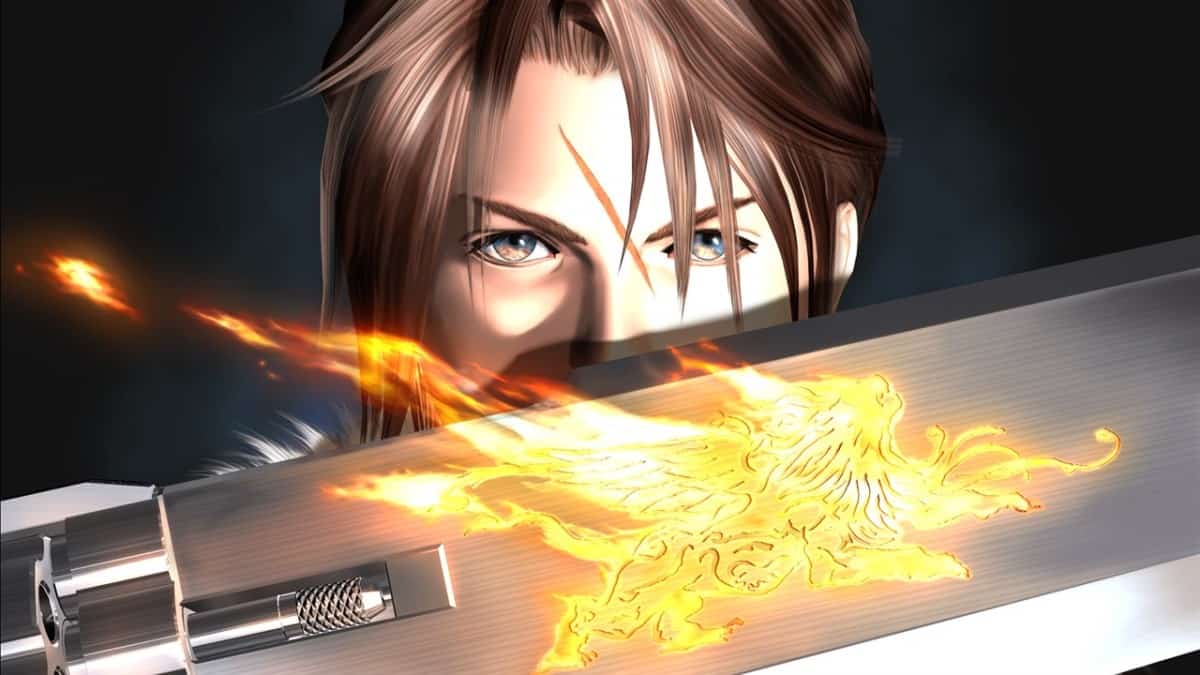There are many variables that govern how combat unfolds in Final Fantasy VIII. To fully understand Final Fantasy VIII’s battle mechanics, you need to know how the different Damage types and Status Effects work.
Table Of Contents
Damage Types and Elements
Combat in Final Fantasy VIII centers around many different variables. The main damage types are Physical Damage and Magic Damage.
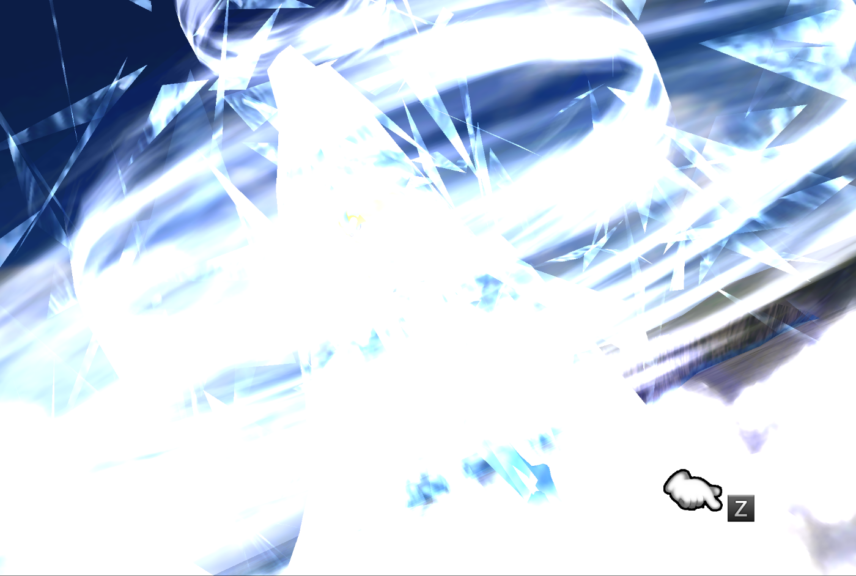
In addition, there are 9 Elements that act as modifiers to both damage types. Certain elements will deal increased damage to the element they are opposed to as follows:
- Fire is opposed to Ice and vice versa
- Thunder is opposed to Water and vice versa
- Wind is opposed to Earth and vice versa
Additionally, the other elements are:
- Holy
- Poison
- Non-elemental
Enemies will often be weak to a certain damage type and/or element. However, they’ll also often be resistant to other elements. Enemies can even potentially absorb certain types of elemental damage. This means they are healed by them.
Your characters can inflict Elemental damage by summoning certain GFs, casting certain spells, and by junctioning magic to Elem-Atk-J. Conversely, your characters can be resistant to or absorb elemental damage with Elem-Def-J.
Status Effects
Status Effects are certain temporary states that can affect the party and enemies alike during combat. Like with other RPGs, they fall into two broad categories: Negative Status Effects (Debuffs) and Positive Status Effects (Buffs). Almost all status effects will be removed from a combatant when that combatant runs out of HP and dies.
Negative Status Effects
Negative Status Effects generally disadvantage the combatant they are applied to. It’s generally advised to remove them as soon as possible when they’re applied to the Active Party. All Negative Status Effects can be removed by finding locations for your characters to rest—for example, using Tents. It’s possible for both enemies and the Active Party to be resistant to Negative Status Effects. You inflict and resist Status Effects using St-Atk-J and St-Def-J, respectively. Additionally, you can inflict and remove Negative Status Effects with certain items and magic.
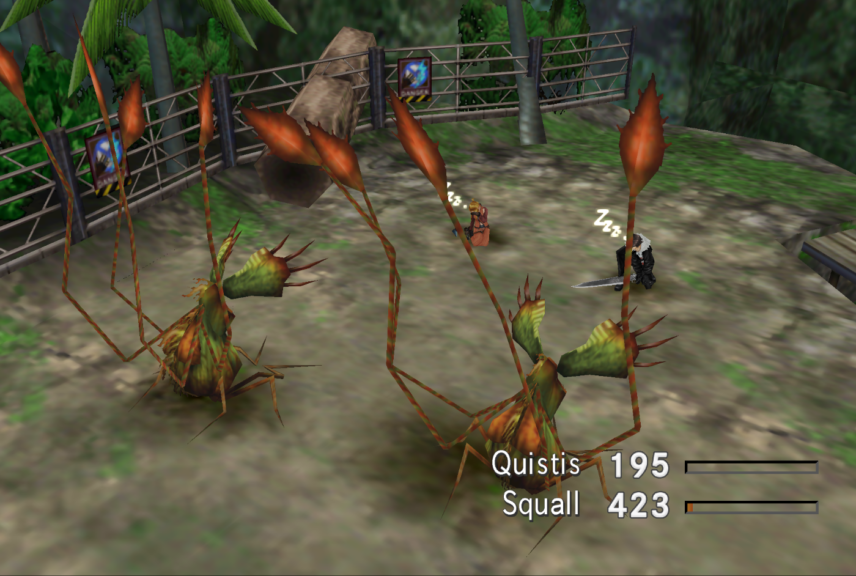
The chance that a Negative Status Effect is successfully inflicted on a target is dependent on the way it’s inflicted (as well as any resistances mentioned before). If it’s inflicted via a physical attack, then the chance increases the higher the attacker’s Str stat and the lower the target’s Vit stat.
In the case of a casting magic that inflicts a status, the chance increases the higher the attacker’s Mag and the lower the target’s Spr stat. In this way, it can be more difficult to inflict Negative Status Effects on higher-level enemies, as their Vit and Spr are higher.
Negative Status Effects comprise of:
- Death – A combatant has death applied when they have 0 HP as a result of taking too much damage. They will be unable to perform any action until they are revived and, if all party members are dead, it causes Game Over. Additionally, Sudden Death can also be applied with certain commands but it’s possible to be resistant to this. Death can be removed with certain magic and items such as Phoenix Down, Life, Full-life, etc.
- Darkness – When Darkness is applied to a combatant, their hit rate is greatly reduced which means their physical attacks are much more likely to miss. If a character’s hit rate is 255%, then they cannot miss (note that gunblade users will be unable to use their Trigger when Darkness is applied to them). Darkness can be removed with certain items and magic such as Eye Drops, Esuna, Remedy, etc.
- Sleep – When a combatant has Sleep applied, they’re unable to perform any commands for the duration of the effect. Sleep will eventually wear off or can be removed by inflicting physical damage on the combatant in question. It can also be removed with magic and items such as Esuna, Remedy, etc. Sleep is removed after a battle if it isn’t removed during battle.
- Poison – When a combatant is inflicted with Poison, they’ll lose a small amount of HP after every action they perform. Poison can be removed with items and magic such Antidote, Esuna, Remedy, etc.
- Confuse – When a combatant has Confuse applied on them, they’ll perform random commands (i.e. Attack, Magic, and Item) on random targets, often their own party members. Confuse can be removed by physically attacking the afflicted combatant and it can also be removed with certain magic and items such as Esuna, Remedy, etc. Confuse is removed after a battle if it isn’t removed prior.
- Silence – When a combatant has Silence inflicted on them, they’ll be unable to perform or draw Magic. They’ll also be unable to use the “GF” command. Silence can be removed by using Echo Screens, Esuna, Remedy, etc.
- Curse – A combatant who has curse inflicted on them is unable to perform their Limit Breaks. It can be removed with magic and items such as Esuna, Holy Water, and Remedy. It can also be removed by applying the positive status effect Aura on the combatant. Curse wears off after a duration and is removed after battle.
- Petrify and Petrifying – Petrify immobilizes the combatant it’s applied to, meaning they are unable to perform any actions. Similar to Death, if all characters are petrified, it causes Game Over. Petrifying causes a countdown on a combatant. When this countdown reaches 0, the combatant will be petrified. Both Petrify and Petrifying can be removed with items and magic such as Soft, Esuna, Remedy, etc.
- Zombie – When Zombie is applied to a combatant, the effects of recovery and revival commands are reversed. This means that curative items and magic will cause damage to the combatant. Items and Magic that would otherwise revive the combatant will instead kill them. Additionally, the combatant will take double Holy-Elemental Damage. However, Zombie will halve incoming physical damage and will also make the combatant immune to Instant Death and Doom. Zombie can be removed with magic and items such as Holy Water, Esuna, Remedy, etc.
- Slow and Stop – Slow and Stop both affect the ATB gauge. Slow will slow the rate at which the combatant’s ATB gauge fills. This means it will take longer for them to perform successive actions. Stop will effectively pause the combatant’s ATB gauge. This means the combatant will be unable to perform actions so long as they have Stop applied, as the ATB gauge won’t fill. Both Slow and Stop will gradually wear off and can be removed with magic and items such as Remedy+ and Esuna. Additionally, Slow and Stop will replace one another and can both respectively be replaced with the Positive Status Effect Haste, and vice versa. Both Slow and Stop will be removed after battle.
- Berserk – Berserk causes the combatant to physically attack random opponents for 50% extra damage. However, the combatant is uncontrollable and will continue to attack in this way until Berserk is removed. Berserk can be removed with items and magic such as Remedy, Esuna, etc. Berserk will be removed after battle.
- Vit 0 – Vit 0 will reduce the combatant’s Vit and Spr to zero. This means that the combatant will incur much more damage from both physical and magical attacks. Vit 0 can be removed by certain items and magic such as Esuna and Remedy+ and will be removed after battle is over.
- Doom – When Doom is applied to a combatant, a countdown will start. Once that countdown reaches 0, Sudden Death will be inflicted on the character, resulting in their death. Doom can be removed with items such as Remedy+ and it will also be removed after battle has finished, provided the counter hasn’t reached 0 when the battle is complete.
- Eject – When a combatant has been ejected, they are removed from battle entirely and cannot be revived or brought back for the remaining duration of that battle.
- Gravity and Drain are unique ways of inflicting damage on a combatant. Gravity-based attacks work by removing a specific proportion of a combatant’s HP. Drain works by healing the attacker by the amount they damage their target when casting Drain (or notably when attacking with Drain junctioned to St-Atk-J.)
Positive Status Effects
Positive Status Effects generally benefit the combatant they are applied to in some way. It’s recommended that you apply these on your active party in combat to give them an edge over your opponents during more challenging encounters.
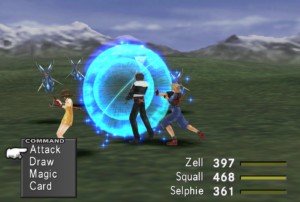
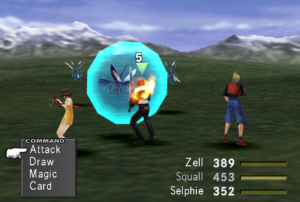
It’s also generally advised to remove these status effects from your enemies as soon as possible, often by using Dispel.
All positive status effects are removed after battle unless you specifically set an Auto ability on your character, whereby the positive status effect will remain on the character until the ability is removed.
Additionally, almost all Positive Status Effects will wear off after a set time during combat.
Positive Status Effects comprise of:
- Protect – When applied to a character, Protect halves all physical damage inflicted on the combatant.
- Shell – Shell halves all magical damage inflicted on the combatant that has it applied. Keep in mind that Shell also reduces the amount of HP recovered from healing magic.
- Haste – Haste increases the speed at which the combatant’s ATB gauge fills. This in turn results in them being able to perform more actions over the same time period. Casting Haste on a combatant will also remove Stop or Slow.
- Reflect – Reflect will deflect any single target magic from the combatant back to the caster/the caster’s party. This also includes healing magic and magic that applies Positive Status Effect. Keep this in mind if you have Auto-Reflect set on a character as it won’t be removed even if the character has been KO’d.
- Regen – When applied, Regen will heal a small amount of the combatant’s HP over regular intervals of time.
- Float – Float nullifies any Earth-Based damage the combatant may take for the duration it is active.
- Double and Triple – Double and Triple both allow multiple casts of magic in one action. Specifically, Double allows the combatant to cast magic twice in a single action and Triple allows the combatant to cast magic three times in a single action. Unlike other positive status effects, neither Double nor Triple will wear off, although they’ll still be removed after battle.
- Aura – Aura greatly increases the crisis level of the combatant. This means they’re more likely to have their Limit Break to be available and that Limit Break will be more powerful.
- Other Positive Status Effects will only be applied to the character in special circumstances, such as with a character’s limit break or with the use of special items or commands:
-
- Defend, for example, is a command ability that will nullify all physical damage and halve magical damage while the character is defending. However, the character can’t perform actions while they’re defending.
-
- Invincible makes characters impervious to almost any kind of damage or status effect. It’s applied with certain items and Limit Breaks.
-
- There are additional unique status effects tied to certain characters’ limit breaks
Scanning Enemies
You can use the magic Scan to find more information about your enemies, such as what Status Effects and Elemental Damage Type is effective against them, as well as their current and max HP.
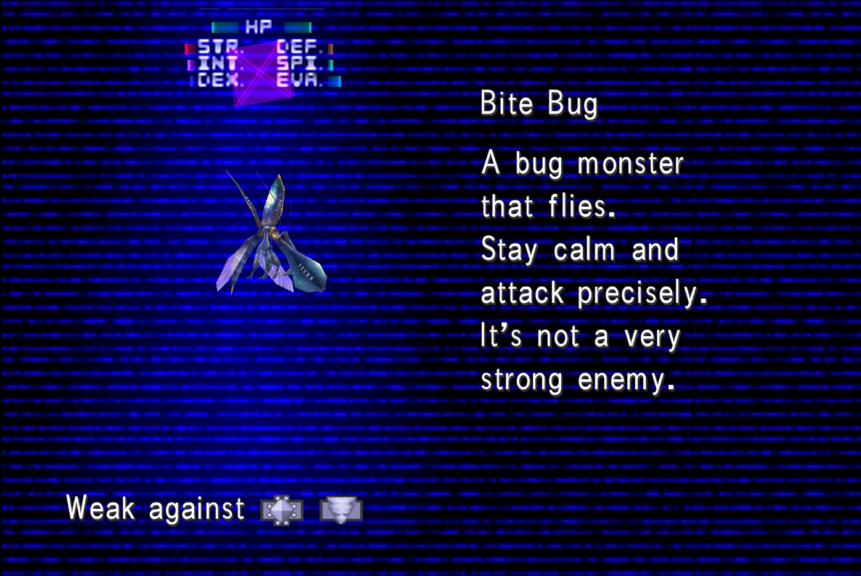
The information displayed will depend on what you selected in the Config menu. If you selected the “Always” option, then you’ll always see the complete page of information. If you select “Once,” then you’ll only see the complete page of information when you first scan an enemy. Any additional times you scan them will show an abridged page.


